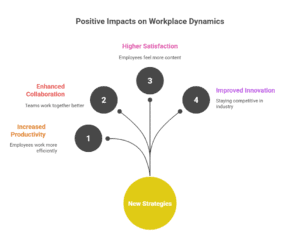My Appointment Scheduling Stack: Answering Service Synced with Our System

In the fast-paced world of healthcare and service-based industries, managing appointments effectively isn’t just a convenience it’s a critical part of delivering high-quality care and minimizing operational friction. That’s why we’ve built our appointment scheduling stack with a specific focus: seamlessly integrating our answering service with our EHR and scheduling system. The result? Calls translate into confirmed appointments without manual intervention, and staff are freed from the never-ending loop of phone tag and follow-up.
Why Syncing Your Answering Service Matters?
Most clinics and practices use some form of third-party answering service, especially for after-hours coverage or overflow during busy times. These services are excellent for ensuring no call goes unanswered—but what happens to the information collected? Too often, messages sit in inboxes or post-it notes, waiting for a staff member to re-enter them into the scheduling system, follow up with patients, or worse, play phone tag.
This double-handling not only wastes time but increases the risk of errors and missed appointments. By integrating the answering service directly with our internal scheduling tools, we’ve eliminated these inefficiencies entirely.
How Our Stack Works?
1. Call Reception Through a HIPAA-Compliant Answering Service
Our front line is a HIPAA-compliant answering service trained to follow custom scripts that mirror our intake process. Whether it’s a new patient inquiry or a follow-up appointment request, the answering service captures essential details accurately and consistently.
2. Real-Time API Integration with Scheduling System
The real magic happens with our API integration. Once the call is completed, the answering service uses secure API endpoints to push appointment data directly into our EHR-integrated scheduler. This process includes:
Patient name and contact info
Requested provider or service type
Preferred time slots
Notes on urgency or special needs
This data appears in real time on our internal calendar, ready for confirmation or automatic assignment based on predefined rules.
3. Two-Way Sync with EHR and Patient Communication Tools
Our system isn’t just one-way. Confirmations, appointment reminders, and patient intake forms are automatically triggered once an appointment is set. This keeps patients informed and reduces no-show rates, while also updating patient records within the EHR automatically.
4. Fail-Safe Protocols for Ambiguous Requests
If a call doesn’t clearly indicate a suitable time or lacks patient data, the answering service flags it for manual review. Our team is notified within minutes to follow up, ensuring that nothing slips through the cracks.
Benefits We’ve Seen

Reduced Staff Workload
Front-desk and administrative teams no longer spend hours processing voicemails and emails. This not only boosts morale but allows staff to focus on higher-value tasks like patient care coordination and service quality.
Fewer Missed Appointments
With automatic syncing and real-time scheduling, we’ve drastically reduced the chances of appointment requests getting lost or delayed.
Better Patient Experience
Patients can call any time, speak with a live agent, and know their appointment is confirmed—all without waiting for a call-back.
Scalable for Growth
As we expand services or locations, our tech stack scales with us. We can simply add new providers and services into the integration rules, and the answering service takes care of the rest.
Key Tools in Our Stack
HIPAA-compliant Answering Service (e.g., Smith.ai, Ruby, or custom-trained BPO agents)
Scheduling System (integrated with tools like Calendly, Acuity, or native EHR scheduling)
EHR Platform (e.g., Athenahealth, eClinicalWorks, AdvancedMD)
Automation Layer (custom APIs, Zapier, or n8n for logic-based routing and messaging)
Patient Engagement Suite (for confirmations, reminders, and pre-visit instructions)
Future Enhancements
We’re exploring AI voice assistants and natural language understanding (NLU) to allow even smarter triage and appointment setting. Eventually, patients could call, speak to a virtual agent, and have their appointment confirmed without any human intervention while still offering a human fallback when needed.

What Did We Learn?
Syncing our answering service with our scheduling system has been one of the most impactful upgrades to our operations. It’s streamlined our workflow, reduced manual work, and provided patients with faster, more reliable scheduling. If your clinic is still manually handling calls and appointments, it’s time to explore this integration—it’s not just about saving time; it’s about raising the bar for service.
What People Are Asking?
 Book a Demo to Build Your Team Today!
Book a Demo to Build Your Team Today!



 Read Case Studies
Read Case Studies 


 Virtual Medical Assistants
Virtual Medical Assistants



